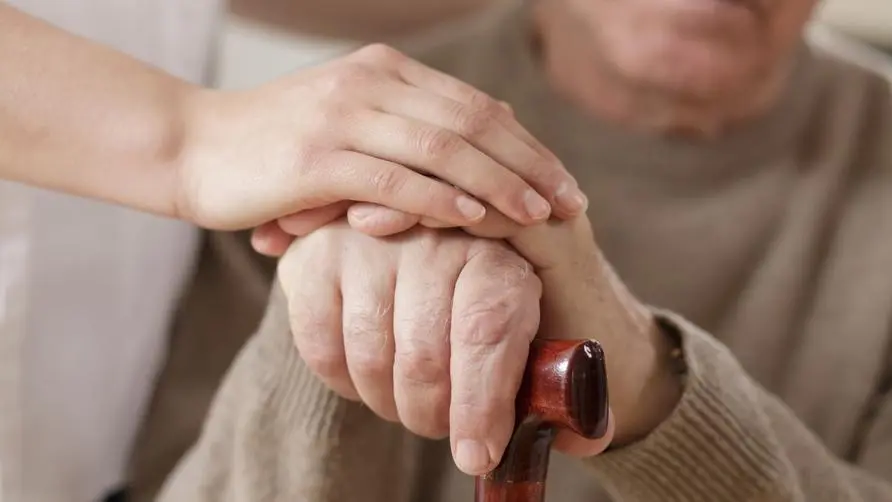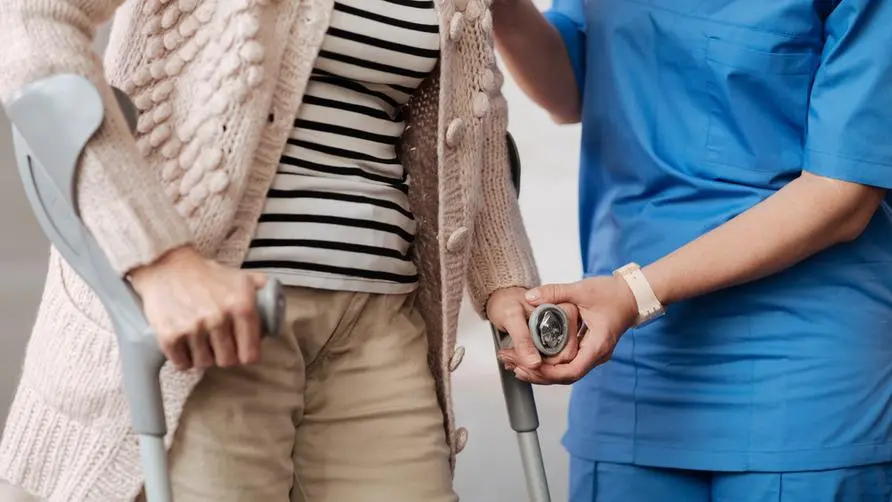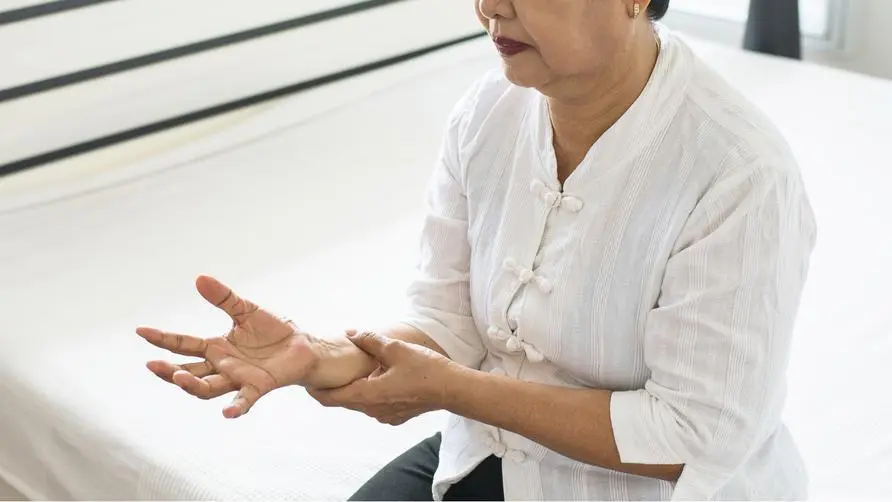Are your hands shaking and your shoulders stiff? How to distinguish Parkinson's disease from stroke or frozen shoulder? The doctor teaches a trick to identify signs

Is trembling hands a stroke or Parkinson’s disease? Doctor teaches a trick to identify signs
Dr. Kuo Fuxuan, the attending physician at the Geriatric Medicine Center of Taichung Veterans General Hospital, said that the main cause of Parkinson’s disease is the degeneration of the “substantia nigra” and “basal ganglia” of the brain and the neurons that produce dopamine. As for why the brain How and when it degenerates remains to be clarified by medical research. The common age of onset is 50-60 years old, and the average age of diagnosis is about 60 years old; the incidence rate among those over 65 years old is about 1-2%.
Dr. Guo Fuxuan pointed out that for primary Parkinson’s disease, the main symptom will occur in motor performance. Patients will have “resting tremor” and their hands will tremble involuntarily, about 3-5 times per second. . In addition, there may also be symptoms such as slow walking and movement, as well as expressionless faces and soft speaking.
Many people are unable to distinguish neurological symptoms caused by Parkinson’s disease from stroke. Dr. Guo Fuxuan said that stroke will have a very clear onset time. For example, when you go to bed the night before, you will be in a normal state, but the next morning you will find that half of your body is paralyzed and weak. This is different from Parkinson’s disease. Symptoms of the disease, which are mainly manifested in movements, vary.
Stiffness is also a possible symptom of Parkinson’s disease. How to distinguish it from frozen shoulder? Dr. Guo Fuxuan said that frozen shoulder is usually accompanied by shoulder pain and limited shoulder joint movement. The stiffness symptoms of Parkinson’s disease are not limited to the shoulders, but may be generalized stiffness or hand tremors.
Dr. Guo Fuxuan appeals that if you don’t know which department to seek help when symptoms occur, you can first go to the family medicine department, neurology department, or geriatric medicine department, and let the doctor make a preliminary diagnosis and clarify the problem.
What are the stages of Parkinson’s disease? May it be combined with “dementia”?
Dr. Guo Fuxuan explained that the course of Parkinson’s disease is very slow, and the interval from onset to bedridden may be 10 to 20 years. The symptoms of Parkinson’s disease are often mild in the early stages, causing patients to easily delay seeking medical treatment. Generally speaking, the progression of Parkinson’s disease can be divided into the following 5 stages (Hoehn and Yahr Stage):
Stage 1: Symptoms mainly affect one side of the body (such as trembling, stiffness), but you can still walk.
Stage 2: Symptoms affect both sides of the body without affecting balance.
Period 3: The “central axis” of the body is affected, and problems with the balance system begin. Patients may have unsteady walking and may fall easily.
Stage 4: The disability becomes more serious. Although you can still walk or stand, you need assistance from relatives and friends in daily life.
Stage 5: The patient needs to be bedridden or in a wheelchair for a long time and cannot move around on his own.
Dr. Guo Fuxuan said that late-stage Parkinson’s disease is indeed prone to comorbid dementia and other mental diseases. However, if cognitive impairment such as memory loss and misidentification occurs 1 to 2 years before symptoms such as resting tremor and masked face occur, it is necessary to consider whether the problem is caused by other diseases.
Can Parkinson’s disease only be treated with medication? What to do about switching phenomenon and dyskinesia?
Dr. Guo Fuxuan explained that general primary Parkinson’s disease has good therapeutic effects through drug control, and most patients’ symptoms such as hand tremors and slow walking can be significantly improved. However, after treatment for more than 5-7 years, the efficacy of the drug may gradually shorten, causing the patient’s “switching phenomenon” to become obvious, requiring further adjustment of the drug.
Dr. Kwok Fuxuan pointed out that one of the main treatments for Parkinson’s disease is to replenish the “levodopamine” in the brain. When these drugs are used in younger patients, they are likely to cause “dyskinesia” problems, which are caused by fluctuations in drug concentration. involuntary actions. Therefore, the treatment of Parkinson’s disease must assess age and other conditions and give appropriate drugs to achieve good symptom control. Other effective treatments include dopamine receptor agonists, monoamine oxidase inhibitors, and anti-acetylcholine drugs.
Dr. Guo Fuxuan said that as Parkinson’s disease progresses, the occurrence of “switching phenomenon” may increase. On the other hand, if the drug concentration fluctuates too much, side effects such as dyskinesias may easily occur. In addition to adjusting medication, some patients have been evaluated as candidates for surgical treatment such as “deep brain stimulation”.
However, if you have experienced cognitive dysfunction, depression, dementia and other diseases, it is not recommended to have surgery rashly to avoid worsening of related symptoms.
Is there any way to prevent Parkinson’s disease? Is Tai Chi the most effective exercise?
Dr. Guo Fuxuan emphasized that there is currently no clear way to prevent primary Parkinson’s disease, but Parkinson’s disease caused by “secondary” causes, such as stroke causing damage to the basal ganglia and substantia nigra of the midbrain, and the use of specific drugs to damage the brain Neurons, frequent exposure to pesticides, and exposure to metals such as manganese and copper are possible risk factors for secondary Parkinson’s disease.
Once Parkinson’s disease occurs, in addition to regular medication, movement conditions can also be improved through exercise and activities. Dr. Kwok Fuxuan suggests that patients with Parkinson’s disease can perform aerobic exercise combined with rehabilitation to train their sense of balance, which can improve resting tremor, hand shaking and other problems. There is also research evidence that “Tai Chi” can effectively improve the motor symptoms of Parkinson’s disease and is one of the exercise methods that can be considered.
Patients with Parkinson’s disease often have difficulty starting. Dr. Guo Fuxuan said that in addition to exercise and rehabilitation, laser walking machines, walking sticks or single canes can also be used to help patients improve their difficulty in starting and moving. Before using assistive devices, consult a geriatrician or neurologist.





